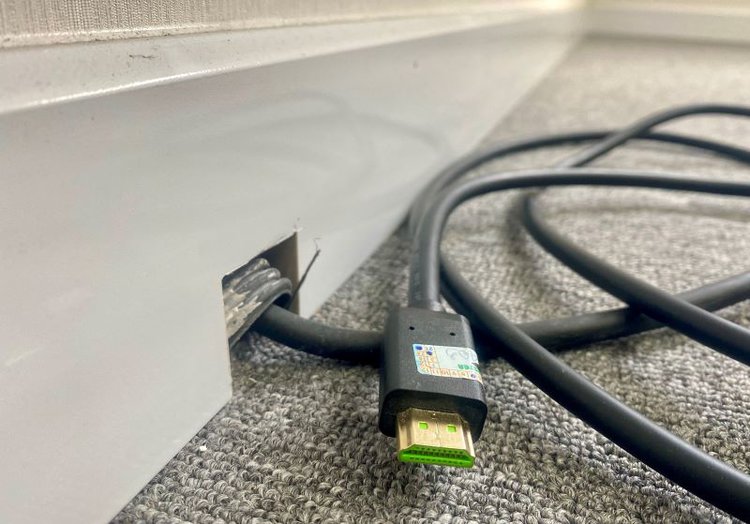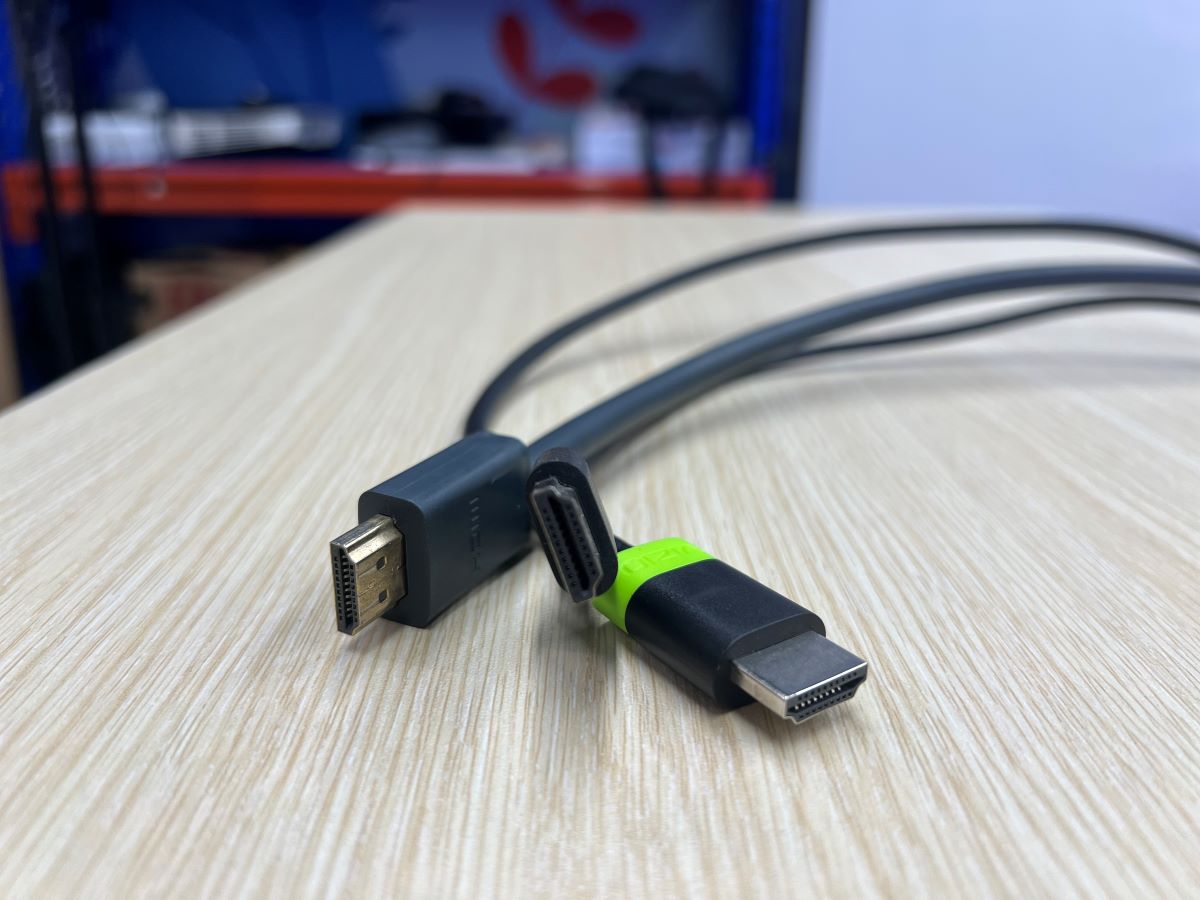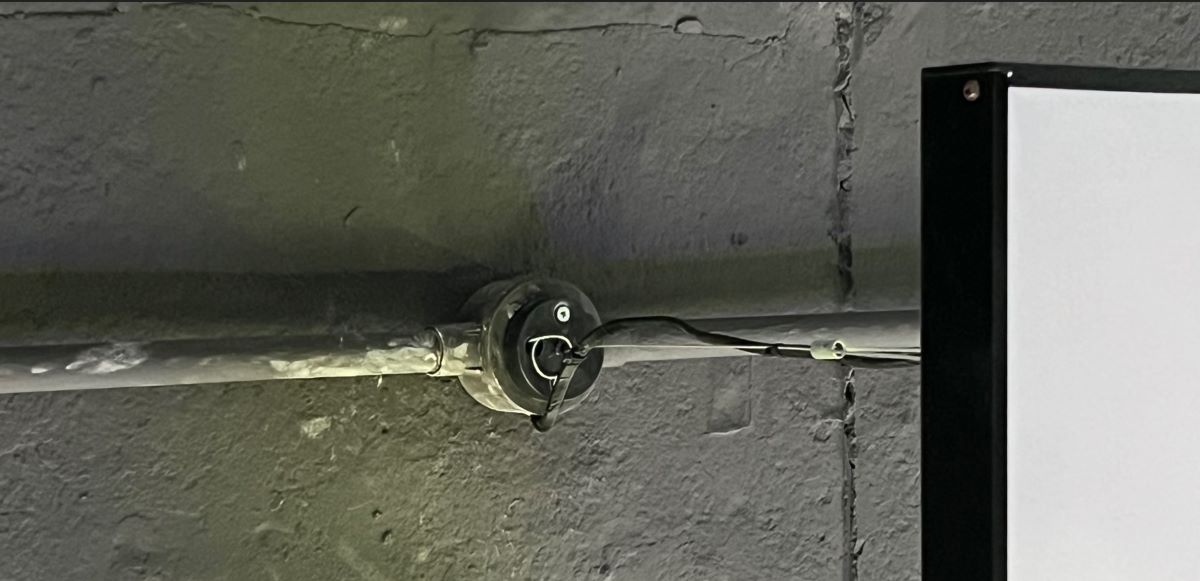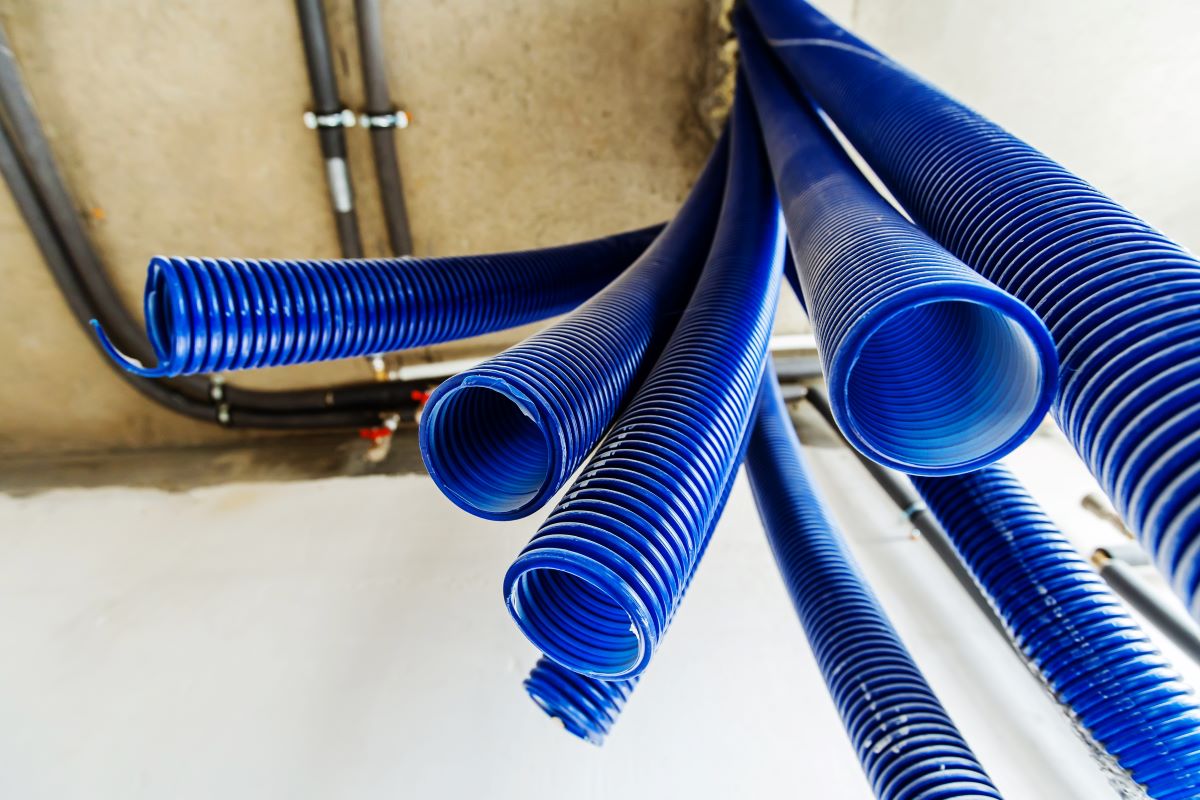How Big Conduit for a HDMI cable?

What To Know
- Choose a conduit size that fits both the HDMI cable and connector. Standard HDMI cables work with ¾-inch conduits, while mini HDMI fits ½-inch conduits.
- If dealing with narrow conduits, opt for micro HDMI cables. If renovating, consider installing broader conduits for more flexibility.
- For tight spaces, you can cut an HDMI cable’s end, thread it through the conduit, and then connect to an HDMI outlet socket to seamlessly extend the connection to your device.
There are different sizes of HDMI connectors, but the most common among consumer electronics are: Standard HDMI (Type-A) and Mini HDMI (Type-C). HDMI cables in these categories can fit into ¾-inch and ½-inch conduits respectively.
In this article, we’ll explain a few factors you should consider before choosing a conduit size for HDMI cables. We also show you how to thread cables through narrow, built-in conduits. Keep reading!
Quick Navigation
How to Choose an Appropriate Conduit for Your HDMI Cable
Conduit sizes are often expressed in inches and the more common ones are ½, ¾, 1, 1¼, and 1½ inches.
The standard HDMI connector is 13.9mm while mini HDMI is 10.42mm in diameter. Hence, a ¾” (19mm) conduit is big enough for each of them and a ½” (12.7mm) conduit is big enough for mini HDMI connectors.

It looks pretty straightforward, but there’s more.
You have to consider how many cables you’ll be running through a conduit and make the necessary calculations. If you’re running multiple cables, you should go for larger conduit sizes (1 inch and above).
Generally, we recommend choosing bigger conduits even if you’re running a single cable. This way, you’ll have room for any new cables you acquire in future for wired internet, an extra console, or other devices that upgrade your TV experience.
How to Thread an HDMI Cable Through a Narrow Conduit
While you can install and attach external conduits to a wall, it’s more common for conduits to be built-in and run inside the walls of a building. This means that you might not always be able to choose the size of your conduit.
If your cable’s connector is wider than the conduit installed in a building, you’ll find it difficult to thread the cable through. Difficult, but not impossible.
This section discusses ways to route an HDMI cable through different types of conduits.
1. Concealed Conduits
If you move into an apartment with built-in conduits, chances are the conduit is too narrow for multiple standard HDMI cables. Unless you have a remodeling permit and a boatload of money, you cannot change the conduits—change the cables instead.

Consider using mirco HDMI cables for narrow conduits; a micro HDMI connector is 6.4mm and will easily fit into a ½-inch conduit. Also, some come with a detachable Type-A connector, which you can use after threading the micro HDMI cable through the conduit.
If your source device uses standard HDMI ports, just plug the micro cable into the detachable Type-A end, and use that with your device instead. However, if you’re renovating, consider installing larger conduits that will accommodate bigger HDMI connectors.
2. PVC Conduits

Conduits can be made of different materials ranging from fiberglass and plastic to metal or aluminum. PVC conduits are lightweight and relatively less expensive than other kinds.
A PVC conduit resembles plumbing pipes, but its design is different and suited to running in-wall cables. Please, don’t use either one in place of the other.
During installation, we recommend you choose PVC conduits because they come in a wide range of sizes (20mm – 200mm). You can install larger sizes and never have to worry about your connectors fitting.

Also, it is hard for a cable to navigate sharp 90-degree turns inside a PVC conduit. Like this user, we recommend you use sweeping turns instead when installing a bend along the length of your conduit.
3. HDMI Outlet Socket
The HDMI cables themselves are smaller than their accompanying connector plugs, measuring between 0.35, 0.45, and 0.6 inches in diameter.
Instead of worrying that a cable’s plug will not fit into your built-in conduit, you can get rid of the connector. Cut off the HDMI connector on one end and feed the cable alone from that end through the conduit.
When the cable comes out on the other end of the conduit, connect it to an HDMI outlet socket (also called a faceplate module).
HDMI faceplates act as signal extenders. You can connect an HDMI cable to them and then use another cable to extend the signal from the module’s HDMI port to your device.
How to use the HDMI outlet socket
Step 1: Cut off the connector on one end of the HDMI cable; the end that goes into your source device.
Step 2: Leave the uncut end plugged into your TV, projector or any other display device.
Step 3: Feed the cut end of the cable through the conduit until it comes out on the other end.
Step 4: Connect the wires on the cut end of the cable to the terminal on your HDMI faceplate module.
NOTE: If you’re feeling adventurous, you may also use screw fixing HDMI adapters screw fixing HDMI adapters instead. They have a male connector, so you can plug them directly into your source device after connecting the wires.
How to Run HDMI Cables Through a Conduit
We’ve established how to choose your HDMI cables and conduit sizes; we’ve also learned when and how to use HDMI outlet sockets. Next, we’ll explore how to feed an HDMI cable through your conduit.
Depending on the length and shape of a conduit, this can be quite a challenge. Below are things you should know.
1. Running a New Conduit
If you’ve purchased a new conduit and plan to install it within the walls, here’s an important tip.
Run the cable through the conduit before installation. Afterwards, you can assemble the conduit in the wall and install it in places.
This method will save you the trouble of trying to run an HDMI cable through a concealed conduit where it might get stuck at a sharp bend.
2. Using a Conduit Already Inside The Wall
If you’re finding it hard to run your HDMI cable through a concealed conduit, you’ll need electrical fish tape and black tape. The fish tape’s firm and flexible design provides good pushing power that helps it maneuver crowded channels.
All you have to do is feed the fish tape through the conduit until it comes out on the other side. Next, secure one end of your HDMI cable to the fishing tape and pull the tape back through the conduit.
Don’t make the secured section too bulky, so that the fish tape and HDMI cable won’t get stuck or entangled with other cables already inside the conduit. Apply steady pressure until you see the fish tape and HDMI cable emerging on your end of the conduit.
Bonus: Will an HDMI Cable Fit in a ¾” or 1″ Conduit?
Yes, a standard HDMI cable and its connector will fit into a 3⁄4 or 1″ PVC conduit if no other cables or wires are running through it. If there are multiple cables, the chances that they’ll fit are pretty low.

However, for the ¾” conduit especially, it will be harder to feed a standard HDMI cable through. Afterall, the widest end of the cable is approximately 14mm—only 5mm smaller than the diameter of a ¾” conduit.
It is better to opt for bigger conduits like 11⁄2 inches and above, depending on the size of your cable(s). Ensure that the size you decide on leaves enough room for pulling an additional cable when needed.
Where you cannot change your conduit size, we recommend that you use mini or micro HDMI cables instead.
Conclusion
Whether you prefer in-wall or external HDMI cable installation, one thing we can agree on is that you’ll need to run the cable(s) through a conduit. In addition to protection from heat damage, fire hazards, and the elements, conduits keep cables neatly out of sight.
Therefore, knowing what size of conduit you need is an integral part of the installation process. Now that you know what factors to consider before choosing a conduit size, we hope you have an easy time with the installation.
Gabriella ‘Diogo is a technical writer with a vested interest in tech hardware and equipment. She shares her knowledge and processes in an easy-to-grasp, lighthearted style. When she’s not testing or researching device performance, you’ll find her writing short stories or rewatching episodes of her favorite sitcoms.


